
Search engines are becoming smarter and smarter and nowadays they can understand web content almost as good as humans can. Since it is a search engine’s job to rank web contents that readers will find helpful, the final goal of content marketing and SEO is to generate “the best content” for readers. However, constantly generating “the best content” is not an easy task. So, have you ever considered making use of your already existing content, instead of trying to generate fresh new content every time?
In this post we are going to show you 11 ways to achieve your content marketing goals by utilizing and optimizing your existing content. Accordingly, as all these methods make use of content that you already have, they require less resources than needed for generating completely new content.
The 11 methods to reach your content marketing goals are:
- Pruning
- Merging
- Silo-ing
- Republishing
- Tagging
- Anchoring
- Adding Metadata
- Reformatting
- Corner-stoning
- Improving
- Sky-scraping
1. Pruning
Content pruning simply means to delete your web-content that is not adding value to your website. It might be hard to delete blog posts that you created with a lot of time and effort, however, remind yourself that if content does not generate new traffic, backlinks, or any kind of conversion, that means that your readers are simply not interested in that content.
One of the major ranking factors in SEO is engaging content. If you have web content without any user engagement, that might actually do more harm than good to your ranking. Take a look at your Google Analytics or Search Console to figure out which contents to prune.
2. Merging
With the pressure to generate new content on a regular basis to hit one’s content marketing goals, we sometimes end up publishing blog posts that are very similar to already existing ones. This first of all does not impress users as the content is not actually new, and second of all it might lead search engines to think that you are creating spammy duplicate content.
So, we recommend you merge several low or medium quality blog posts into one long, high quality post. One excellent post will help you more than several low quality and short posts will.
Since short content rarely has high SEO scores, websites with too many of these short posts usually do not have a high domain ranking either. As you can see below, the top 20 blog posts with high google ranking had an average of 1,900 words in 2017, compared to 1,300 words in 2015. Content is becoming increasingly longer.
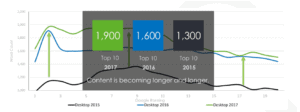
3. Siloing
Siloing is a strategy to connect similar contents with each other. For instance, all posts related to technical SEO in this blog should be linked together by using inbound links and anchor texts.
Siloing helps search engines understand the content and structure of a website. For example, if a website has multiple inbound and outbound links from marketing related websites, the search engine will assume that the website is related to marketing.
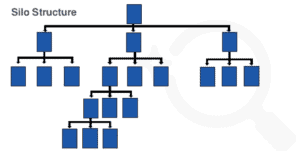
4. Republishing
One of the easiest ways to make use of an old post is to simply republish it. When you republish a post you might be able to see a boost in ranking because recency is a very important factor in search ranking. Republishing through different channels, as shown in the infographic below, is also worth trying.
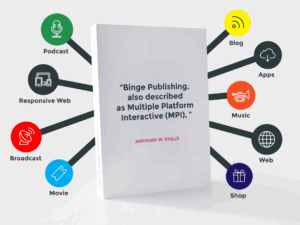
5. Tagging
Tags and categories work as a menu structure that leads visitors to similar or related content. If the reader finds a content they like, they can browse through the tags and categories to find similar contents. It is very helpful for your website’s SEO ranking to grasp the user’s interest and to encourage them to stay longer on your website.
Therefore, tags and categories should contain the topics that your website visitors will find interesting. However, tags and categories also serve different purposes.
We recommend choosing only one category per blog post as choosing too many will distract from the focus of the content. For tags, technically there are no limitations to the amount of tags you use for your post, but it is recommended to not go overboard but to only use tags that are related to your content.
Learn more about tags and categories.
6. Anchoring
Link texts, or anchor texts, are supposed to explain what the linked content is about. This helps not only search engines, but also readers to understand the topic of the linked content without having to click on it. Therefore, try to make your anchor texts as descriptive but at the same time succinct as you can.
7. Adding Metadata

Metadata includes title, meta description, twitter card, open graph, etc. The purpose of all these metadata is for search engines to understand what the content is about.
Title and meta description tags are especially important because they appear on the SERP. Thus, implementing the right keywords in the title and meta description is key to improve one’s conversion rate.
To find the right keywords, you can try out a keyword tool to get keyword ideas as well as search volume and competition data. Check out our keyword tool Twinword Ideas for free keyword suggestions and search data.
8. Reformatting
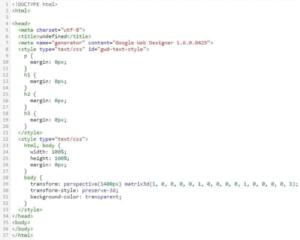
If you are reading a blog post without a title, how would you feel about it? Probably confused. That’s how search engines will “feel” as well. That’s why reformatting using heading tags is important. Simply said, adding heading tags such as H1, H2, and H3 tags is another way to help search engines understand what your content is about.
9. Corner-stoning
Creating popular contents that bring in a lot of traffic is the one wish all content creators have. A high-quality post that covers all aspects of a topic on a single page is called corner-stone or pillar page. It is hard to rank high without a corner-stone page because most of the time corner-stone pages drive traffic for highly competitive keywords.
10. Improving
Obviously, improve your content! If your content is not relevant anymore, change it. For example, “Digital Marketing Trends 2018” can easily be changed to “Digital Marketing Trends 2019” with some updates in content.
Titles in general are something that can be improved. This doesn’t mean that the title should consist of super trendy keywords that are not actually relevant to your post. Try to come up with a title that will intrigue the visitors with a hint of what your content is about.
11. Skyscraping
It is always a good idea to benchmark your content. Look for successful content from competitors that rank high for the keyword that you want to target, and then think about ways on how to improve that content in order to create a better post.
This does not mean that you should steal someone else’s idea or plagiarize. The key is to understand what kind of contents are ranked high and popular, and how you can make it even better. Also, analyzing the successful content will give you insights on what kind of content your readers want.
SEO trends are always evolving
Although trends are evolving, one thing is for sure. Content is king. Start utilizing the 11 tips we gave you in this post to hit your content marketing goals this year!
If you would like to know more about Content Marketing, check out these related articles:
- The Difference Between Tags and Categories
- What is Keyword Stuffing and How To Avoid it
- Content SEO Mistakes you Can’t Afford To Make


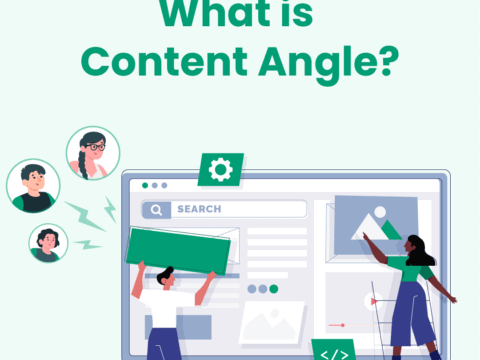

1 Comment
Thanks for the update. These are absolutely very informative. I hope to read more content in the upcoming days as well.